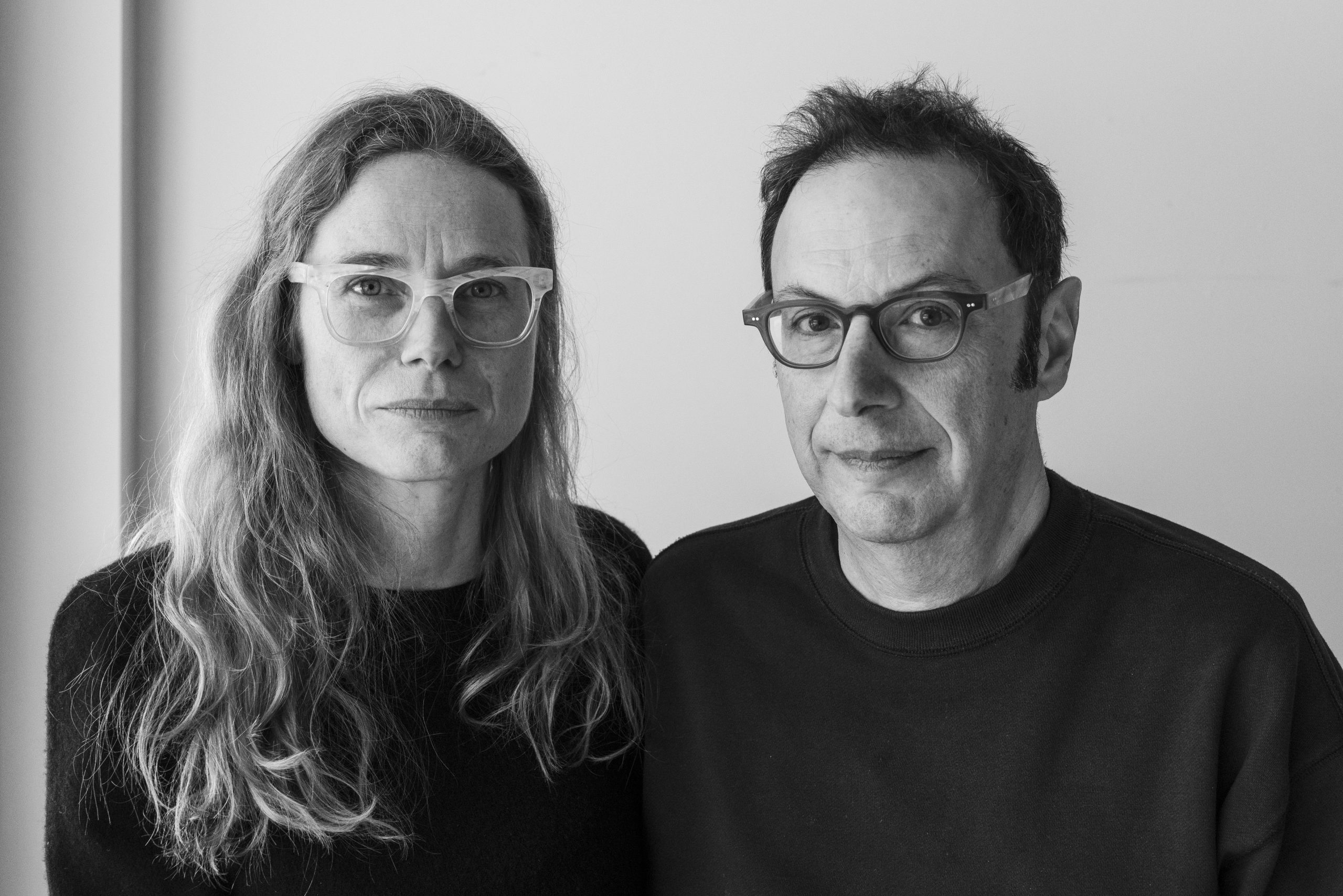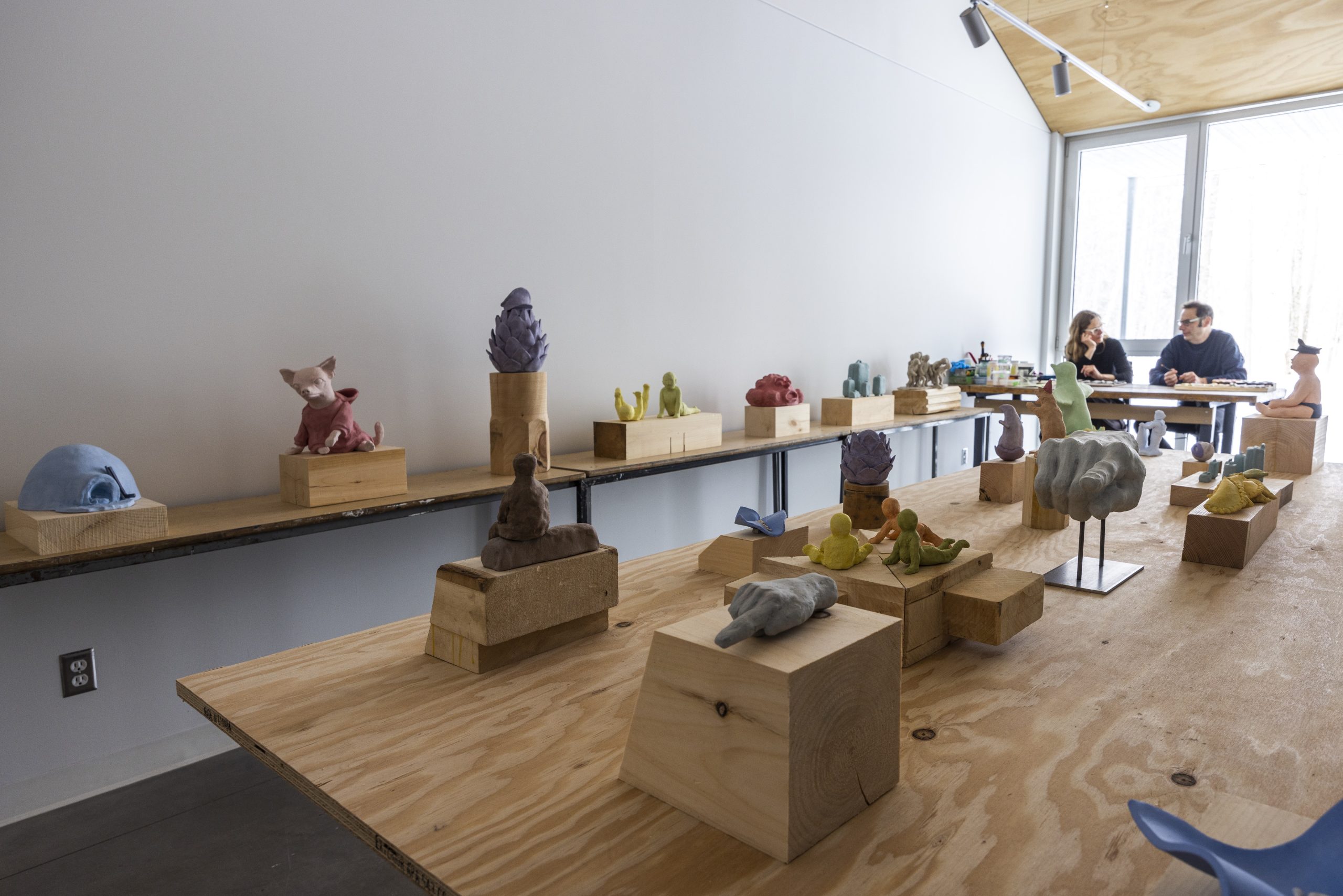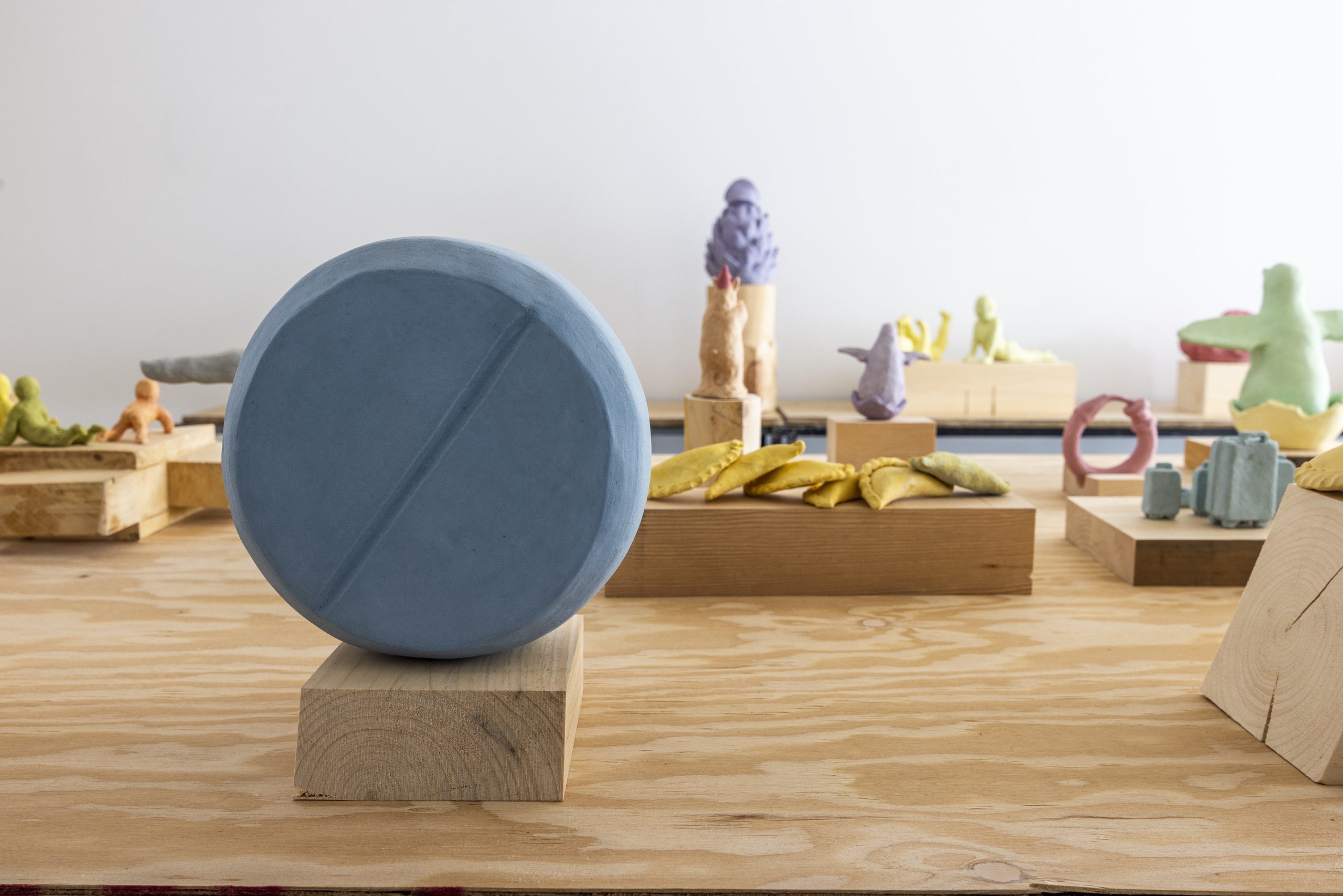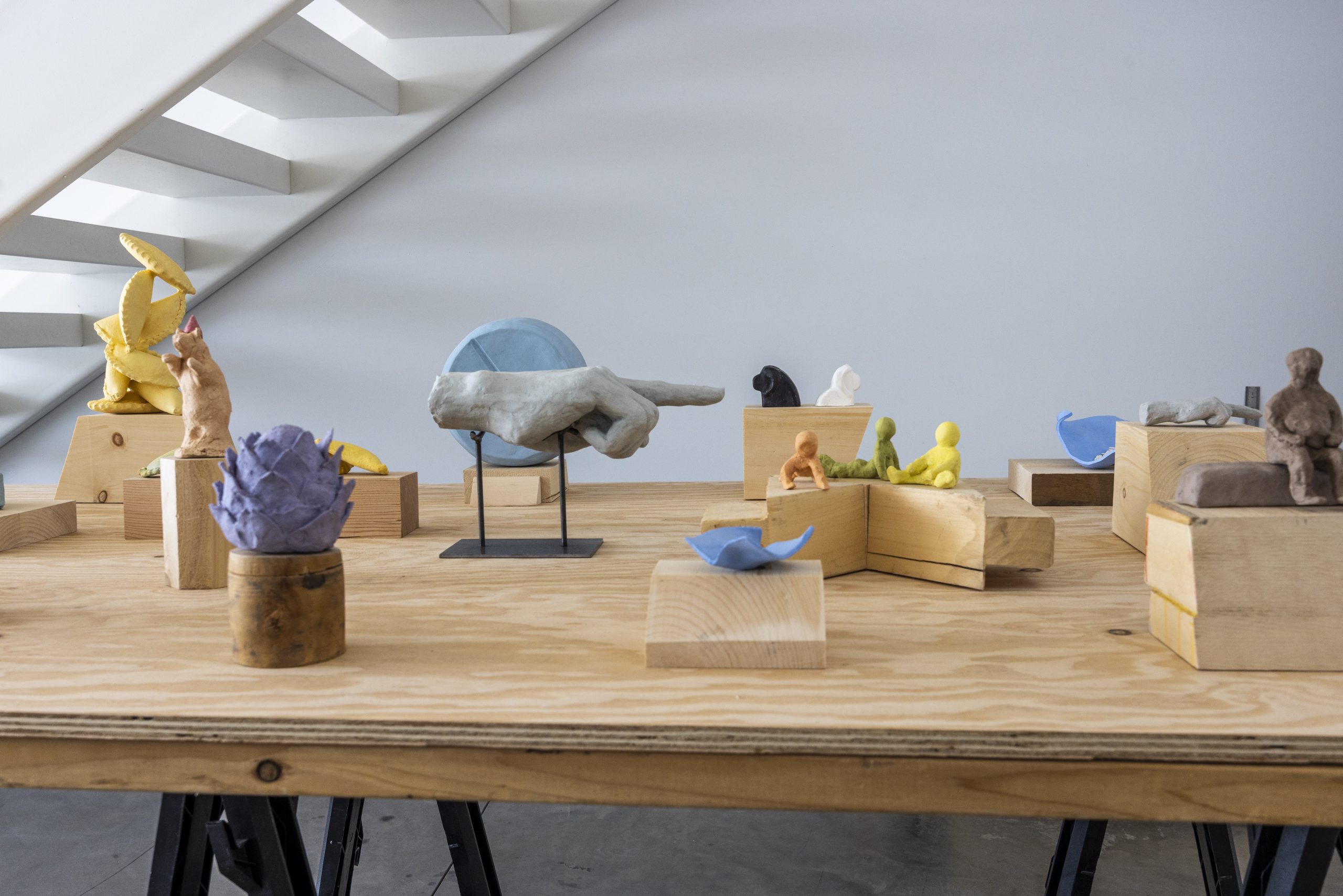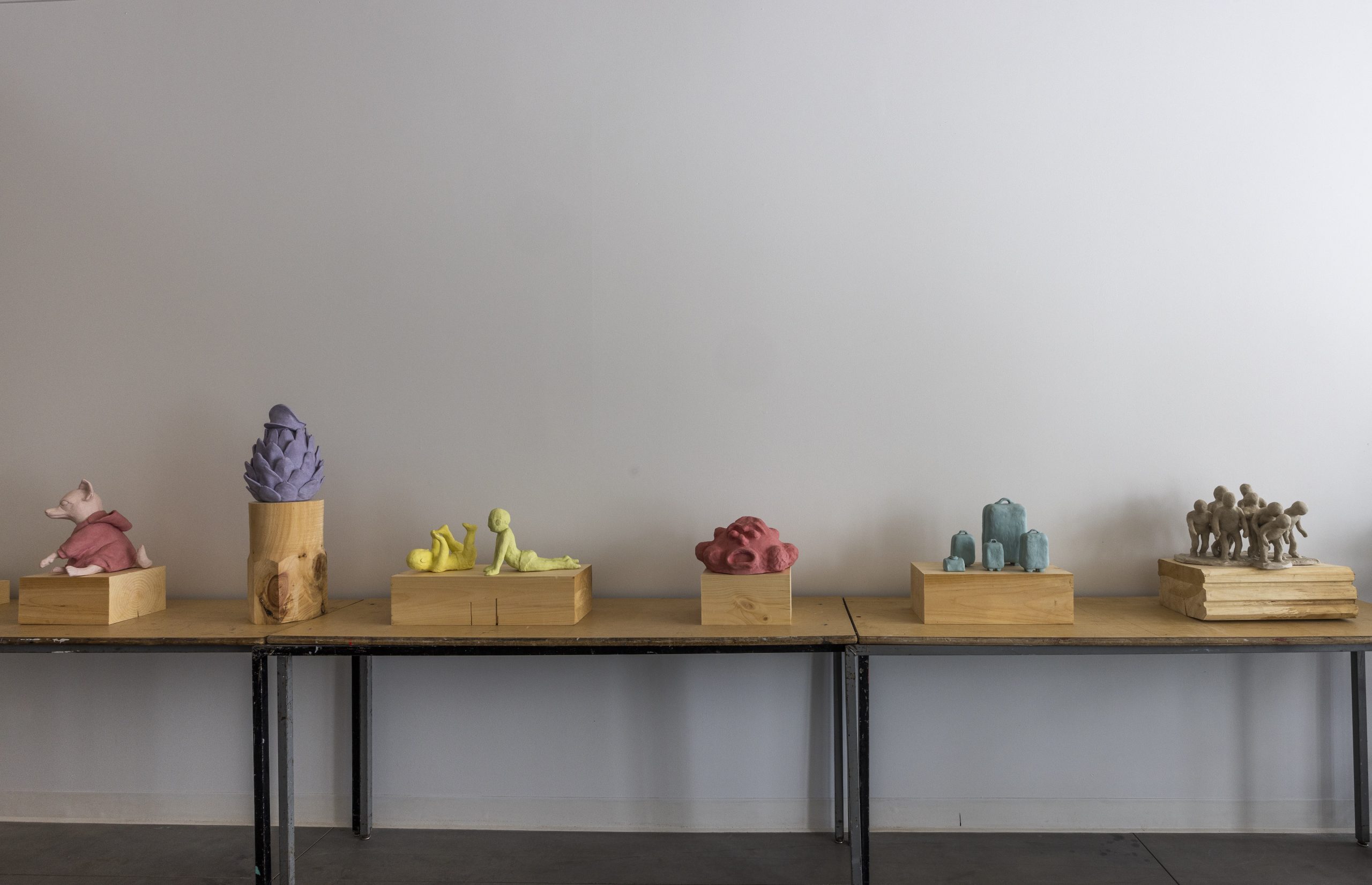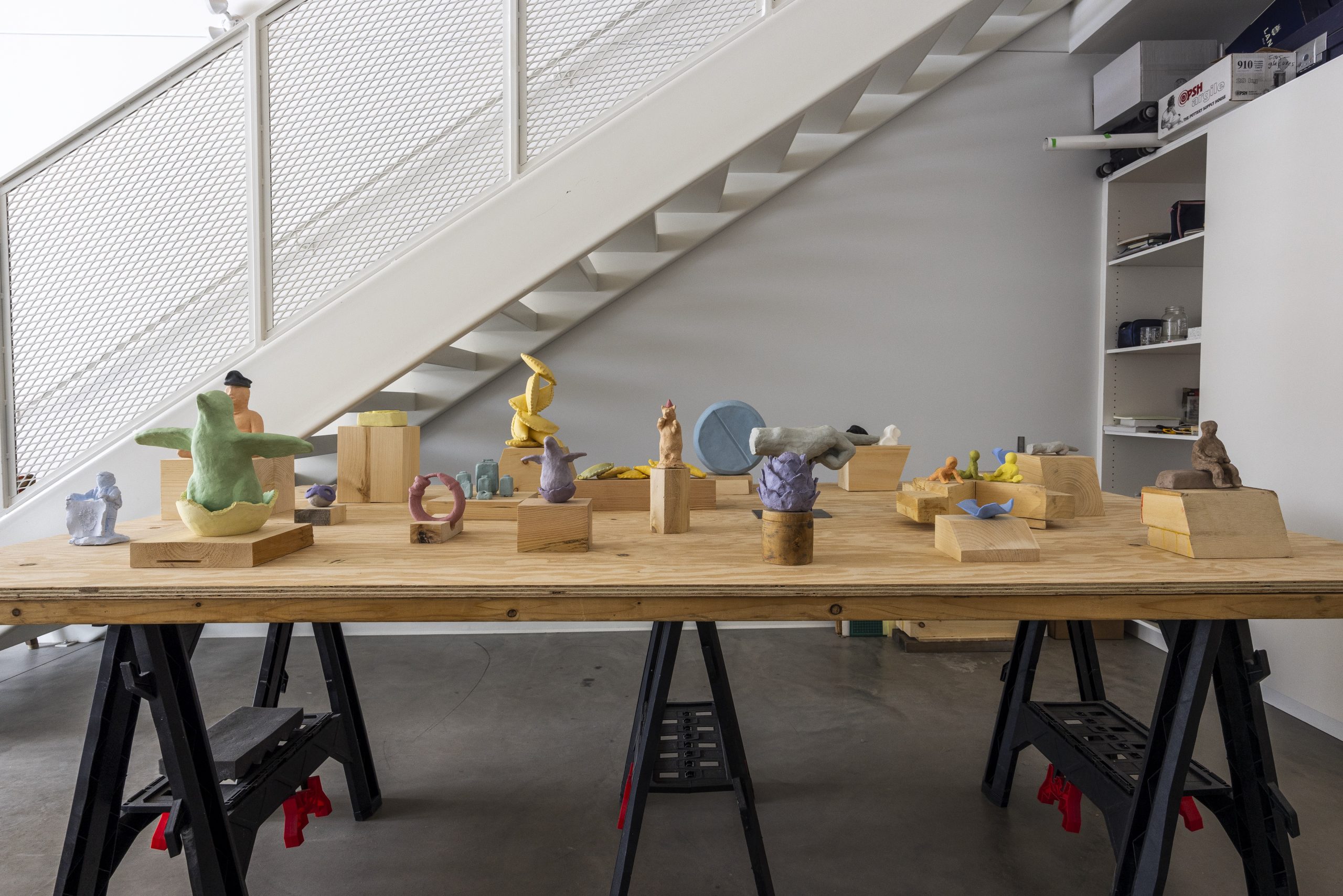
Richard Ibghy et Marilou Lemmens
Testimony
In winter 2024, the artist duo Richard Ibghy and Marilou Lemmens came to stay at ENE to continue their sculpture series Les faits alternatifs du 21e siècle, begun in 2022. Already presented at the Fondation Molinari in Québec and the Jane Lombard Gallery in New York – which has represented them for ten years – here they expanded the collection with new works, intended to be offered to collectors. During their residency, Ibghy and Lemmens produced almost thirty pieces in their signature fluid cadence, intensified perhaps by the extremely tight fit of living space and studio workspace and by the temporal imperatives of the ceramic medium. Their work in the studio has become almost second nature, marked by a balance of discipline, quiet joy, and the manifest pleasure of creating together.
Relatively tangential to their body of work and remarkable for its use of figuration, Les faits alternatifs du 21e siècle extends their research on the materialization of abstractions and the critique of their effects, which include simplification of reality, emphasis on certain elements, and invisibilization of alterity. This approach is part of their exploration of the para-monument, embodied in projects such as 1+1+1=1 (2021), a work of public art that diverts statistical visualization methods to bring neglected digital facts to light, and L’affaire Louis-Robert (2020), which, without formally claiming the status of para-monument, re-presents censored scientific data to preserve the memory of their erasure. In Les faits alternatifs du 21e siècle, however, their approach to the para-monument takes a sharper turn, as they choose to anchor it in the contemporary cultural and political digressions and transformations of the post-truth era.
This inflection is manifested in a context of blurred expression, in which the stories to be made visible are no longer limited to a marginal memory intended to enhance a dominant narrative but include deliberately constructed fictions that serve ideological or political interests. By exposing these stories, doesn’t art risk reproducing the disinformation and confusion that they engender? This peril is further aggravated because one of the major effects of post-truth is erosion in trust in institutions – including those of art and galleries. But Ibghy and Lemmens opt for a discreet critical position; they use irony, based on a fragile complicity with spectators, who are asked to perceive the gap and grasp its meaning. This capacity for interpretation, essential to understanding the work, is blurred by the generalized climate of confusion. It becomes obvious that the artists are counting on the fact that art can still offer a space of resistance and that the gallery, by slowing the gaze, remains a place that encourages readings that are more complex than those conditioned by the mass media and digital platforms.
If Ibghy and Lemmens identify the visual and conceptual challenge of the works in this series as the lack of iconicity of their subjects – which they condense by associating figurative image and descriptive text – their research helps to underscore the central role of images and “visual proof” in the fabrication of pseudo-history. Without making a frontal denunciation, they uncover the murky connections among image, truth, and fabrication and confront the power of images with the power of looking differently – of questioning, discerning, honing our judgment. For these deceptions, as absurd as they may be, have very real effects: exposing them means remembering them, so that we don’t fall for them anymore.
Biography
Combining rigorous research with a material exploration that is specific to each project, Richard Ibghy and Marilou Lemmens’ collaborative practice adopts diverse strategies and formats, including the production of sculptures, videos, installations, public artworks, and artist books. For several years, they have examined the history of science and other forms of knowledge, including the language of economics, the magic of statistics, the capacity for models to impact the future, the aesthetics of data visualization, and the design of laboratory experiments. More recently, their work seeks to expand concepts of hospitality, care, and interspecies communication. They live in Durham-Sud, Québec.
Discover
Newsletter
Keep up to date with the latest news!
